Proper garden lighting can transform your outdoor space into a magical paradise by night. Start by identifying focal points, like statues or fountains, and use spotlights to emphasize them. Remember, less is often more; soft ambient lights can create a serene environment, while path lights ensure safety without overwhelming the scene.
Garden lighting does more than just illuminate; it elevates. Playing a vital role in aesthetics and safety, the right lights can turn your garden into a nighttime wonder. Dive into the transformative power of well-chosen illumination with us.
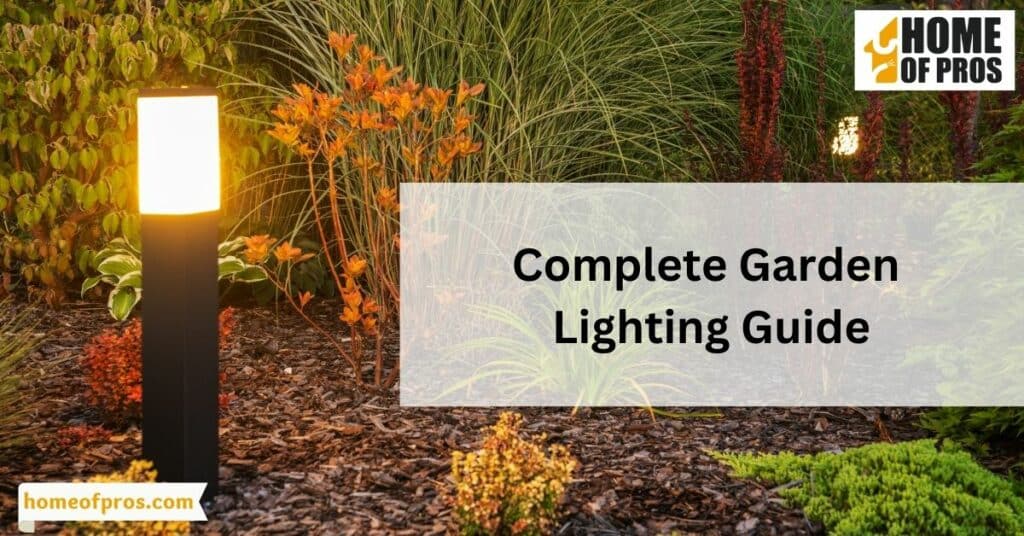
Understanding the Basics of Garden Lighting
Garden lighting is more than just placing bulbs at random; it’s about curating an ambiance. Broadly categorized, we have ambient lights that provide general illumination, task lights focused on specific functions and accent lights that emphasize garden features. Equally vital is the power source choice: whether you opt for eco-friendly solar, traditional electrical, or the flexibility of battery-operated, each comes with its unique advantages and considerations.
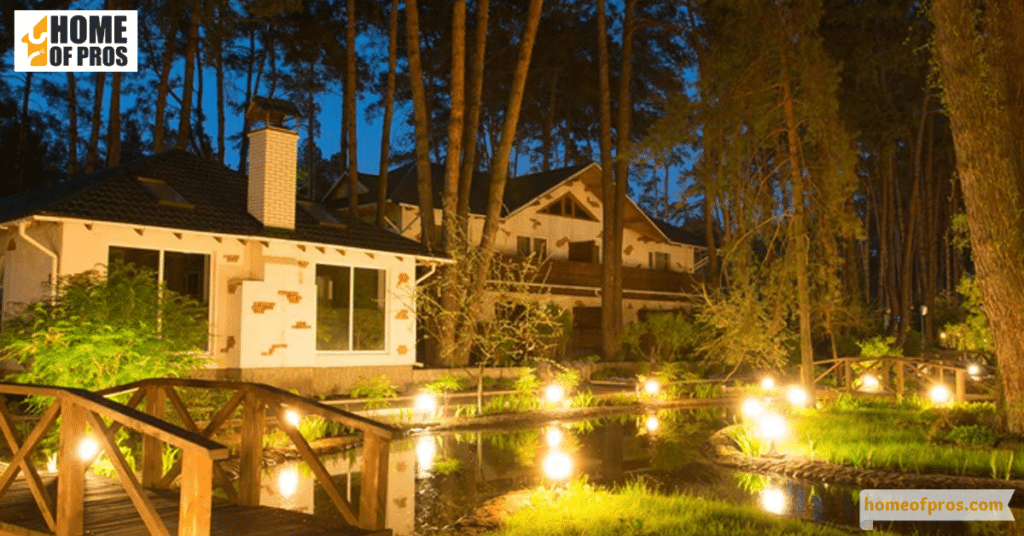
Spotlight on Focal Points: Making Features Shine
A garden’s true essence often lies in its details. Spotlighting these details can bring a dramatic transformation, making your garden’s focal points come alive after sundown.
- Utilizing Spotlights & Directional Lights: Tailored to draw attention, these lights can emphasize unique garden attributes.
- Statues: Turn your statues from mere daytime art pieces to nighttime centerpieces.
- Water Features: Enhance the beauty of fountains or ponds, letting reflections play with the shimmer of water.
- Trees: Highlight the majesty and structure of older trees or the charm of smaller ornamentals.
- Unique Plants: Let the intriguing or colorful plants in your garden get their deserved spotlight.
Illuminating the right focal points can redefine your garden’s nocturnal appeal. By spotlighting key areas, you’re not just lighting up a space; you’re crafting a moonlit masterpiece.
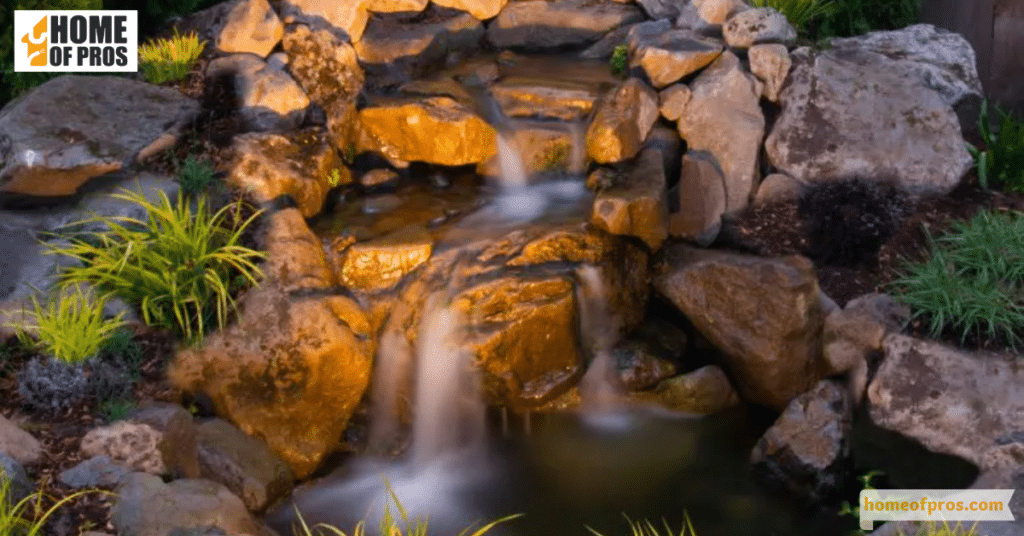
Ambient Lighting: Setting the Mood
Just as background music can set the tone for an event, ambient lighting in a garden creates its underlying mood. The soft, encompassing glow offers both charm and functionality, turning outdoor spaces into serene sanctuaries.
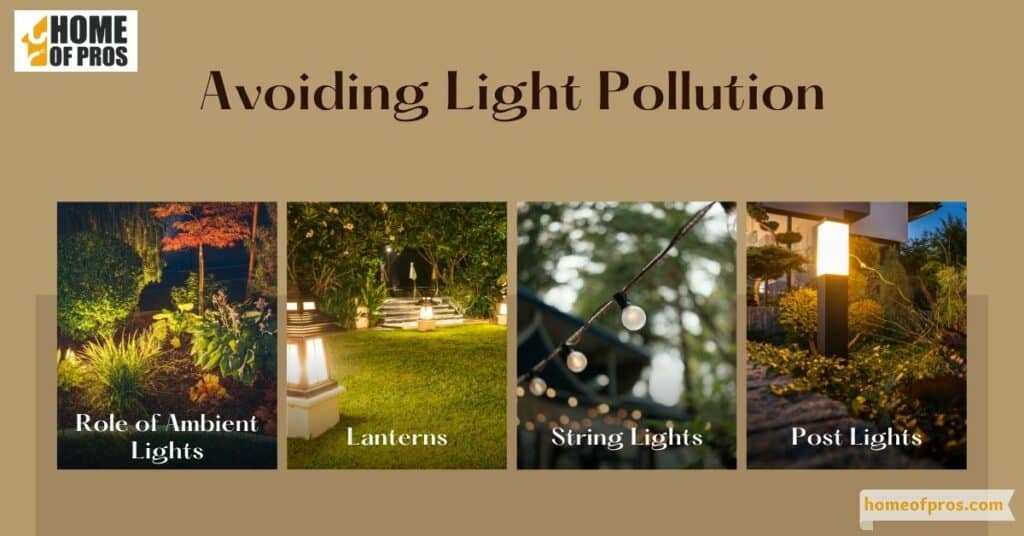
- Role of Ambient Lights: These are the unsung heroes, subtly setting the scene and establishing the garden’s overall feel.
- Lanterns: Classic and versatile, they provide a soft diffusion of light and can be placed or hung virtually anywhere.
- String Lights: Drape them overhead or along fences for a festive or fairy-like touch.
- Post Lights: Stationed at intervals, they bring structure and steady illumination to garden paths or boundaries.
The magic of a garden at dusk lies largely in its ambient lighting. By choosing the right fixtures, you can envelop your garden in a gentle embrace of light, creating a tranquil space to unwind and reflect.
Path and Safety Lighting: Guiding the Way
In the realm of garden lighting, function, and beauty often walk hand in hand, with path and safety lighting being prime examples. Ensuring well-lit pathways and steps is paramount not only for aesthetics but also for preventing missteps and accidents in the dark. Bollard lights, standing tall and sentinel-like, offer clear demarcation for paths.
In-ground lights, almost camouflaged during the day, emerge at dusk to cast a soft glow on walkways. Step lights, meanwhile, ensure each ascent or descent is safely illuminated. As gardens become evening retreats, these lighting options serve as the guardians of safety, subtly guiding our way.
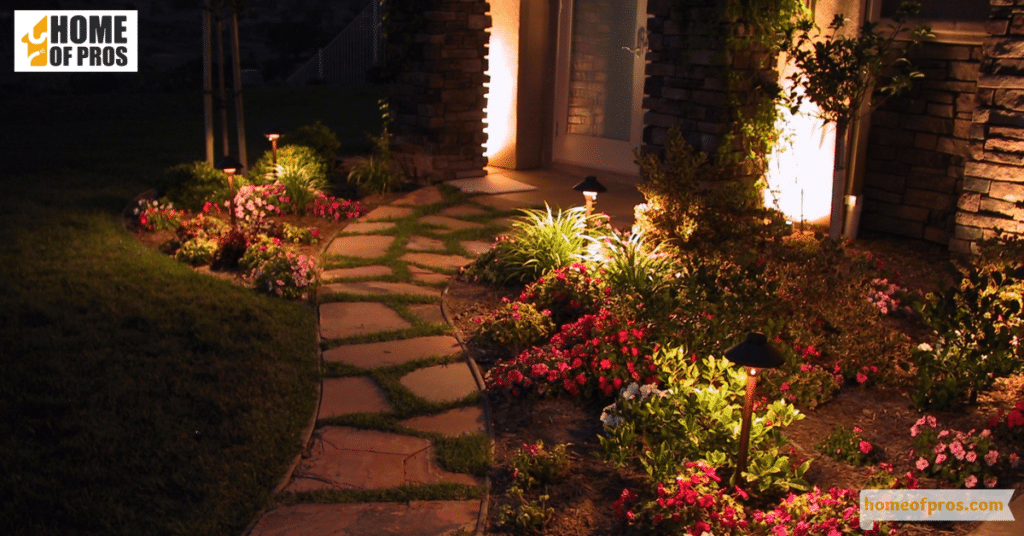
Energy Efficiency and Sustainability
In an age where eco-consciousness is paramount, garden lighting can also play a part in reducing our carbon footprint. Energy efficiency and sustainability are not just buzzwords; they’re practical choices that can enhance the beauty of your garden while minimizing environmental impact.
- Solar-Powered Lights: Harness the sun’s energy during the day to illuminate your garden at night, reducing electricity consumption.
- LED Lights: Not only energy-efficient but also long-lasting, LEDs are a bright choice for sustainable lighting solutions.
- Reducing Energy Consumption: Learn how to optimize your lighting setup to minimize energy use without compromising on the effect.
- Eco-Friendly Garden Practices: Discover tips and practices to create a garden that’s not just visually appealing but also environmentally responsible.
As we tread the path of sustainable living, garden lighting choices become significant contributors to a greener world. By adopting energy-efficient options and eco-friendly practices, you can make your garden a beacon of beauty and sustainability, lighting up both the night and a brighter future.

Design Tips and Installation Best Practices
When it comes to garden lighting, achieving the right balance and considering the nuances of positioning, height, and light pollution is crucial for creating a captivating and eco-friendly outdoor space. Let’s delve deeper into each of these elements:
1. Balance Is Key
- Avoid Over-Illumination: Excessive lighting can wash out the beauty of your garden and create discomfort. Select lighting fixtures and intensities that suit the size and style of your space.
- Highlight Key Features: Identify the focal points you want to accentuate and direct more light toward them. This creates visual interest without overwhelming the entire area.
- Layered Lighting: Implement a layered lighting approach with ambient, task, and accent lighting to provide a balanced and versatile lighting scheme.
2. Thoughtful Positioning
- Highlight Your Garden’s Best: Place lights strategically to showcase the most appealing aspects of your garden, such as sculptures, architectural details, or unique plants.
- Avoid Glare: Position fixtures so they don’t shine directly into the eyes of those enjoying your garden. This reduces glare and discomfort.
- Create Shadows: Experiment with lighting angles to cast intriguing shadows, adding depth and drama to your garden.
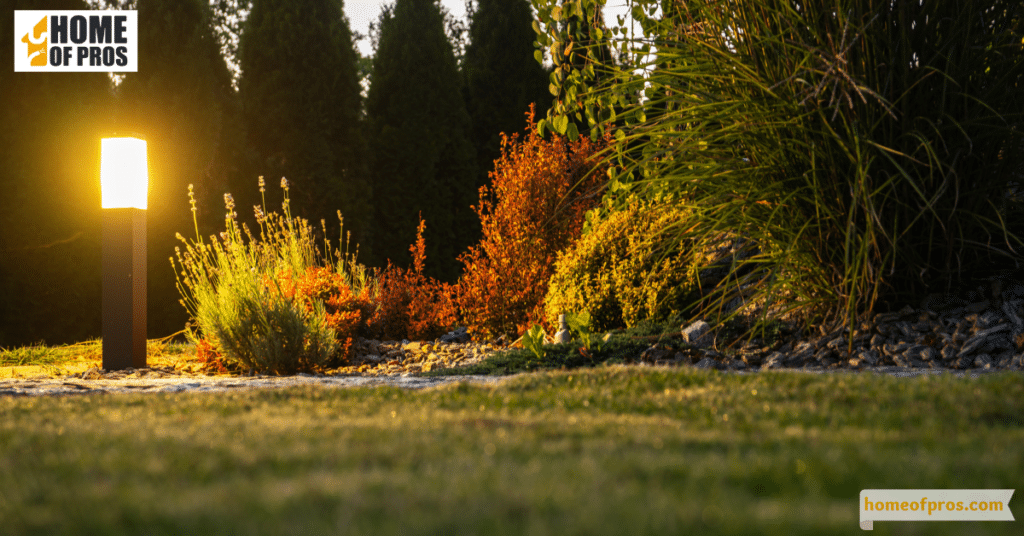
3. Height Considerations
- Vary Fixture Heights: Install lights at different heights to create a dynamic lighting scheme. Ground-level, mid-level, and high-level lights can add depth and visual interest.
- Tree Lighting: Illuminate trees from below or within their branches to create a captivating canopy of light, enhancing the garden’s overall charm.
- Pathway Lighting: For pathways, consider fixtures at knee level to light the way without overpowering the surroundings.
4. Avoiding Light Pollution
- Shielding Fixtures: Choose fixtures with built-in shields or hoods to direct light downward and prevent it from spilling into the night sky or adjacent properties.
- Use Warm-Toned Bulbs: Opt for warm-white or amber-toned LED bulbs to reduce the blue light emission that contributes to light pollution.
- Timer and Motion Sensors: Implement timers and motion sensors to ensure lights are only active when needed, minimizing unnecessary light pollution.
By applying these design tips and installation best practices, you can transform your garden into a mesmerizing nocturnal oasis while preserving the beauty of the night sky and minimizing energy consumption.
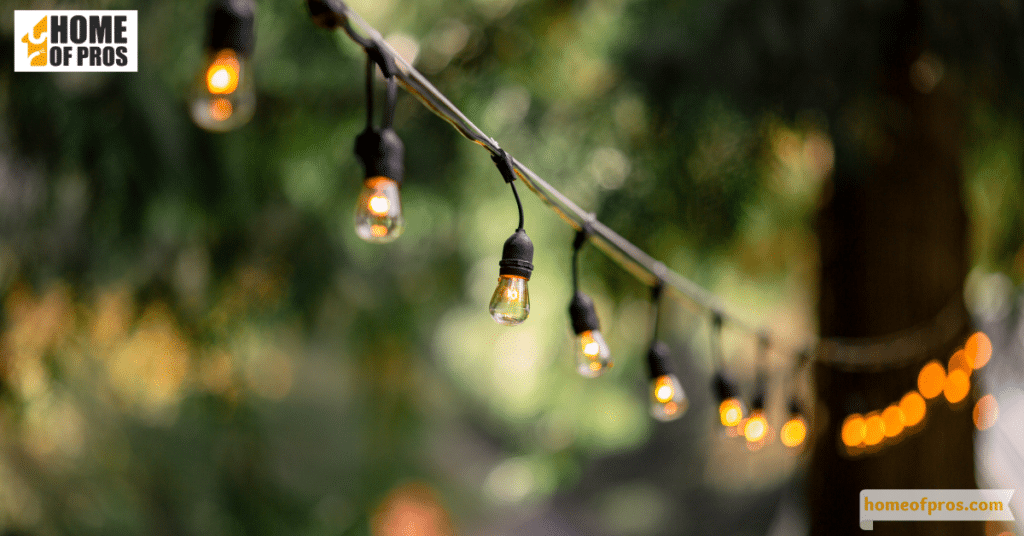
Conclusion
In the realm of garden lighting, mastering the art of balance, thoughtful positioning, height considerations, and light pollution mitigation can truly transform your outdoor space into a mesmerizing nocturnal wonderland. By adhering to these design principles and installation best practices, you not only enhance the aesthetic appeal of your garden but also contribute to energy efficiency and sustainability.
As the soft glow of well-placed lights dances among the shadows, your garden becomes a beacon of beauty, harmony, and eco-consciousness. So, embark on this illuminating journey, and let your garden shine its brightest while protecting the serenity of the night sky.












